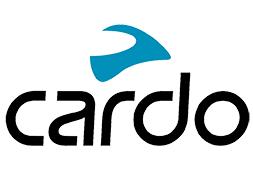
What Does ‘cc’ Mean in a Motorcycle?
Source: Jag_cz/Shutterstock
Carbon copy? No, that can’t be it. Canceled check? Candy corn? Circus clown? Well, rats—what does the “cc” mean on a motorcycle, anyway?
The “cc” stands for cubic centimeters and is used to measure the displacement of a motorcycle engine. You might hear people throw this metric around in conversations over your motorcycle helmet speakers when discussing a motorcycle’s performance, but it’s a lot more complicated than just “cc’s equal power.”
Below, we’ll go into a little more depth on how cc’s affect a bike’s power and performance. But to understand why a motorcycle’s cc rating is useful, let’s first get acquainted with the concept of displacement.
What Is Displacement?
A motorcycle’s displacement is another way to measure the volume of its cylinders. Basically, displacement measures the amount of space that the engine’s pistons sweep within one stroke.
More displacement can mean a more powerful engine. An engine with more displacement provides more room for the fuel-air mixture, which means that the bike is able to combust more fuel at once.
When we’re talking cc’s, we’re talking displacement. Next, we’ll look at why you hear cc’s referenced so often in motorcycle culture.

How Many cc’s Do You Need?
The size of motorcycle engines varies greatly. At the bottom of the scale, you’ll find dirt bikes and small-cc motorcycles like the Honda Rebel 300, with engine sizes from around 200 cc to 500 cc. At the top are monsters like the 2,500 cc Triumph Rocket 3.
You’ll find strong opinions on the subject of cc’s within the motorcycle community. For example, bikes in the 250-300 cc range are common recommendations for folks looking to buy their first motorcycle. But you’ll also meet riders who will tell you that you’ll outgrow a 250 cc bike almost immediately and that it’s worth starting out on something more powerful.
The advice, as always, is to ride what you like. It’s true that if you ride on large highways, a small-cc bike simply may not have the juice to reach and comfortably maintain a highway cruising speed. However, a bike with more cc’s won’t make you a more skillful rider, and it may not even necessarily provide the power you’re looking for if other aspects aren’t right.
Here’s the truth: If you’re only looking at cc’s, you’re not getting the full picture of a motorcycle’s capabilities. Finding the right motorcycle for you requires a holistic evaluation of how the bike feels and rides. For that, you’ll need to look at some other factors.
Looking Beyond cc’s
So, what are the other factors besides cc’s that determine how a motorcycle performs? First, let’s talk about motorcycle weight. A big, chunky bike like a Honda Gold Wing needs a much larger engine than a super-light bike like a Kawasaki Ninja. And conversely, when you put a Gold Wing-sized engine into a lightweight sport bike chassis, you get the ludicrous speed and acceleration of a supersport bike.
The interaction of body weight and engine displacement produces horsepower and torque, both of which are more useful than cc’s for evaluating how a motorcycle feels and rides:
- Torque is force applied at a distance. It measures the force of the combustion in the cylinders, applied to the length of the crankshaft.
- Horsepower is torque multiplied by RPM. It measures how fast the engine does work (i.e., moving the motorcycle). A motorcycle’s horsepower can be increased through various techniques, such as manipulating gear ratios to use torque more efficiently.
If you had to choose one measurement to learn about the characteristics of a motorcycle, horsepower would be a good choice. But note that all of this is a simplified explanation, and these metrics have complex interactions that gearheads can spend years mastering in the garage.
Finally, we can’t forget the intangibles, like how a motorcycle fits the rider’s body and whether its controls are intuitively placed for the rider. These are important for any vehicle, but they’re critical for a motorcycle, where the rider and the vehicle are much more physically intertwined.

Source: Andrey Armyagov/Shutterstock
At Cardo, we’re always game to help riders learn more about the machines that power their passion. Make sure you don’t miss our history of the motorcycle, and check out our guide to the different types of motorcycles to learn about the incredible diversity of bikes available today. And before you head out on the road, don’t forget your Cardo Packtalk Bold—the gold standard of motorcycle communication systems that lets you hear every word of that endless conversation about cc’s, torque and all the rest.
